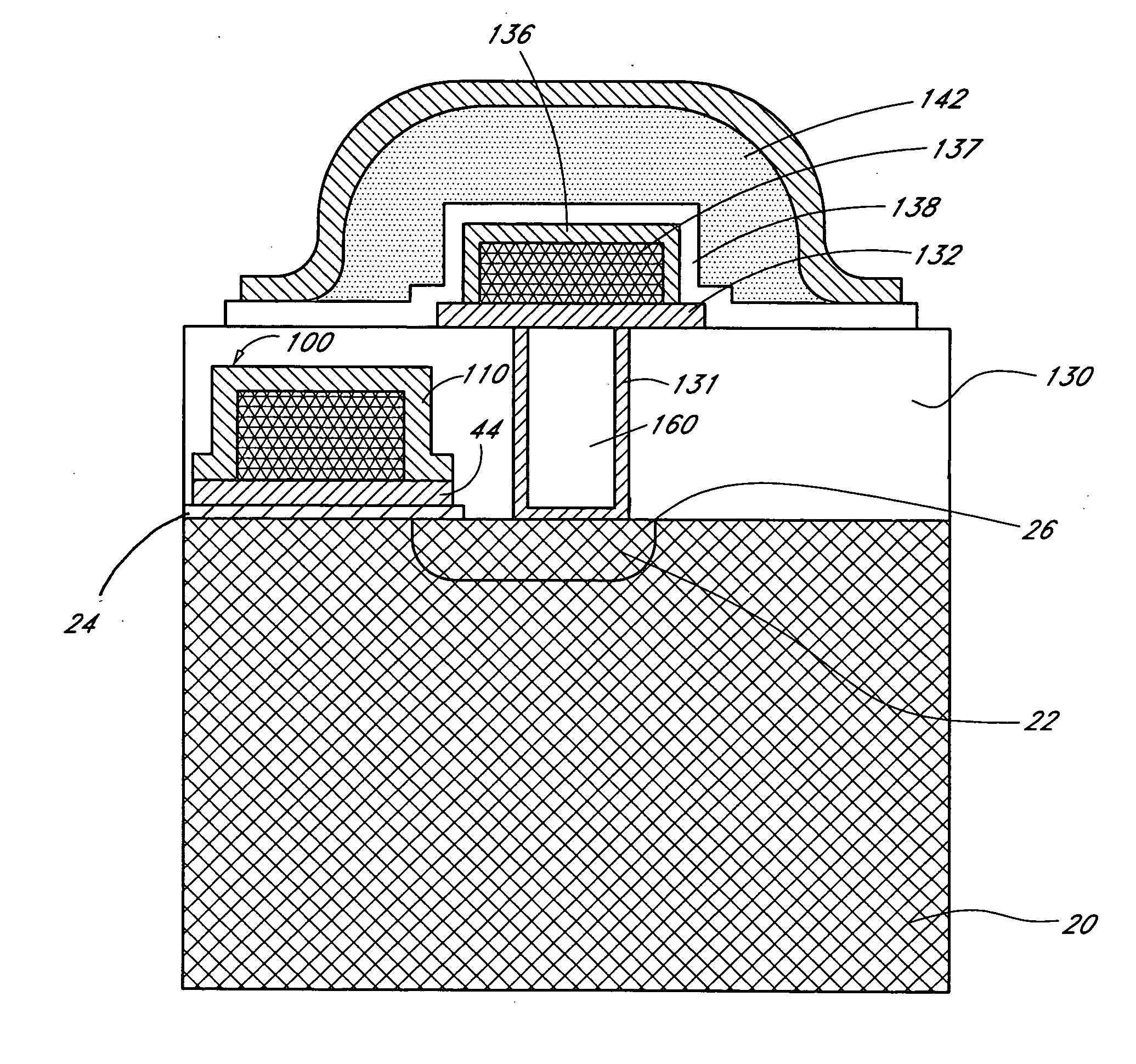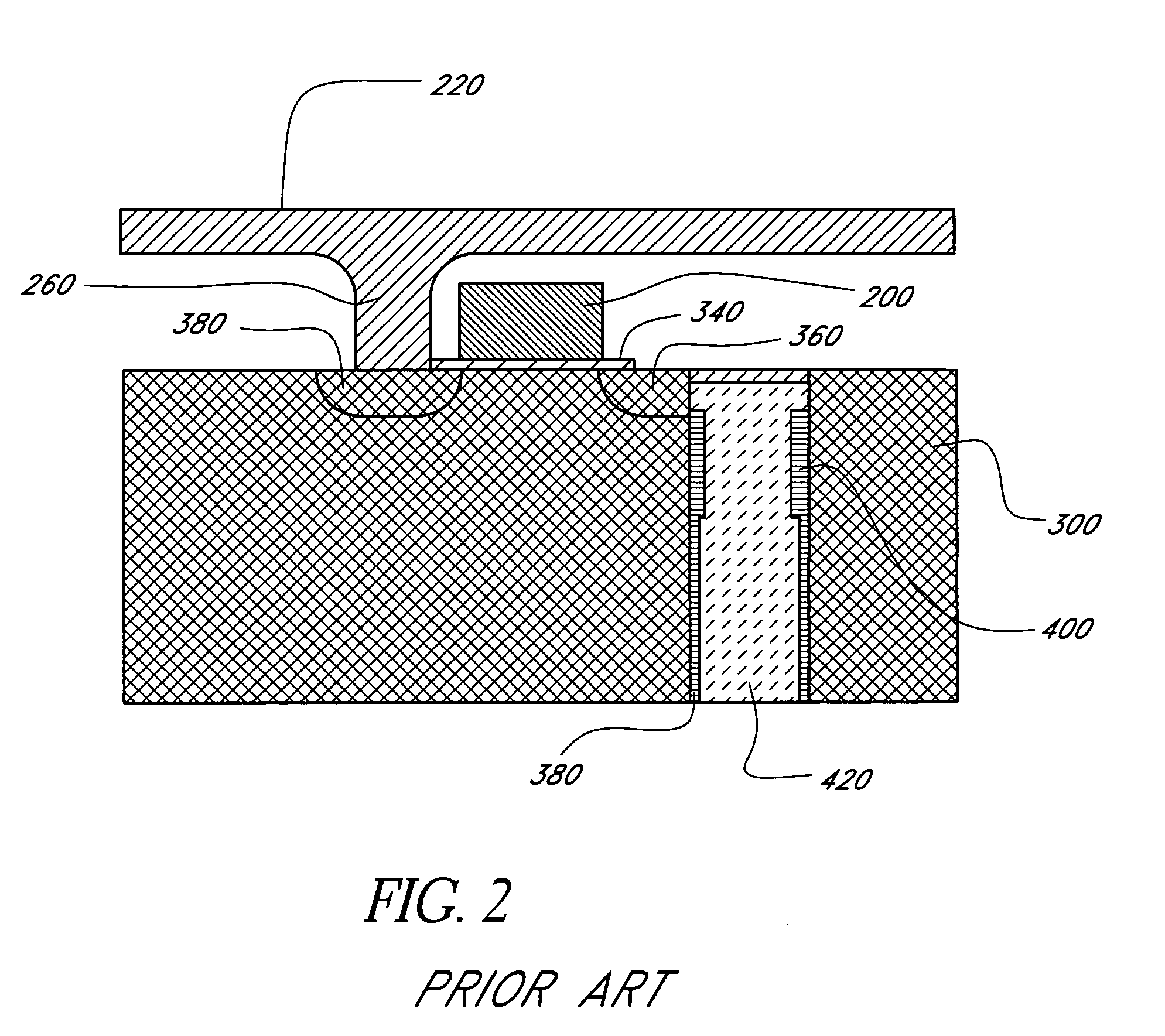Methods of metallization for microelectronic devices utilizing metal oxide
- Summary
- Abstract
- Description
- Claims
- Application Information
AI Technical Summary
Benefits of technology
Problems solved by technology
Method used
Image
Examples
example 1
Reduction of CuO with Methanol Vapor
[0097] A silicon substrate having a copper oxide coating on copper metal is loaded into a reaction chamber, such as an Eagle 10™ reactor, commercially available from ASM Japan K.K. of Tokyo, Japan. The reaction chamber is evacuated to vacuum and heated to 360° C. The pressure of the reaction chamber is adjusted to about 5-10 mbar with flowing nitrogen gas.
[0098] Methanol vapor is mixed with nitrogen gas, introduced to the reaction chamber and contacted with the substrate.
[0099] Excess methanol and reaction by-products are purged from the reaction chamber by flowing nitrogen gas.
example 2
Reduction of CuO with Ethanol Vapor
[0100] A silicon substrate having a copper oxide coating on copper metal is loaded into a reaction chamber, such as the Eagle 10™ reactor. The reaction chamber is evacuated to vacuum and heated to 360° C. The pressure of the reaction chamber is adjusted to about 5-10 mbar with flowing nitrogen gas.
[0101] Ethanol vapor is mixed with nitrogen gas, introduced to the reaction chamber and contacted with the substrate.
[0102] Excess ethanol and reaction by-products are purged from the reaction chamber by flowing nitrogen gas.
example 3
Reduction of CuO with 2-Propanol Vapor
[0103] A silicon substrate having a copper oxide coating on copper metal is loaded into a reaction chamber, such as the Eagle 10™ reactor. The reaction chamber is evacuated to vacuum and heated to 360° C. The pressure of the reaction chamber is adjusted to about 5-10 mbar with flowing nitrogen gas.
[0104] 2-propanol (also known as isopropanol) vapor is mixed with nitrogen gas, introduced to the reaction chamber and contacted with the substrate.
[0105] Excess 2-propanol and reaction by-products are purged from the reaction chamber by flowing nitrogen gas.
PUM
 Login to View More
Login to View More Abstract
Description
Claims
Application Information
 Login to View More
Login to View More - R&D
- Intellectual Property
- Life Sciences
- Materials
- Tech Scout
- Unparalleled Data Quality
- Higher Quality Content
- 60% Fewer Hallucinations
Browse by: Latest US Patents, China's latest patents, Technical Efficacy Thesaurus, Application Domain, Technology Topic, Popular Technical Reports.
© 2025 PatSnap. All rights reserved.Legal|Privacy policy|Modern Slavery Act Transparency Statement|Sitemap|About US| Contact US: help@patsnap.com



